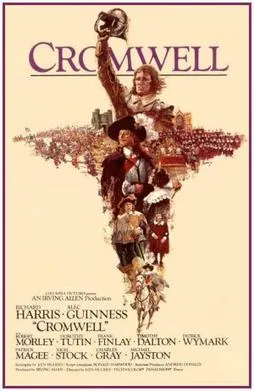Historical accuracy of Cromwell

Historical accuracy of Cromwell

Characters
Oliver Cromwell (Richard Harris)
Based on the real figure, but the film greatly exaggerates his importance in the early stages of the conflict with Charles I and misrepresents his motivations as primarily democratic rather than religious. Harris captures intensity but not necessarily historical nuance.
King Charles I (Alec Guinness)
Guinness's portrayal is highly regarded, accurately capturing Charles I's appearance, reported stammer, dignity, and inflexible belief in his God-given authority, which contributed to the conflict.
Queen Henrietta Maria (Dorothy Tutin)
Accurately depicted as Charles's influential wife, whose Catholicism and perceived influence on the King fueled Parliamentarian distrust.
Earl of Manchester (Robert Morley)
Accurately portrayed as an early, more traditional aristocratic commander for Parliament whose perceived lack of vigour in prosecuting the war led to calls for reform (leading to the New Model Army).
Sir Thomas Fairfax (Douglas Wilmer)
Fairfax was the real commander, but his role (especially at Naseby) is significantly downplayed in the film to elevate Cromwell's importance. His complex relationship with Cromwell is simplified.
John Pym (Patrick Wymark)
Pym was a key leader in the Long Parliament opposing Charles I. His interactions with Cromwell early in the film inaccurately suggest Cromwell was already a figure of great importance sought out by Pym.
More characters
Edward Hyde (Nigel Stock)
Accurately depicted as a key advisor to Charles I (later Earl of Clarendon and historian of the conflict).
Prince Rupert (Timothy Dalton)
Accurately depicted as the dashing and skilled, though sometimes impetuous, commander of the King's cavalry. (His dog Boy shown at Naseby is an error; Boy died at Marston Moor).
John Carter (Frank Finlay)
A fictional character likely created to provide exposition, ask questions on behalf of the audience, or represent the perspective of Cromwell's ordinary followers.
Henry Ireton (Michael Jayston)
A real figure and Cromwell's son-in-law. The film shows him offering Cromwell the crown, which is anachronistic (Ireton died years before Parliament made that offer in 1657).
Story
Causes of the English Civil War
Simplifies the complex religious, political, and financial issues, but touches upon the core conflict between the King's assertion of Divine Right and Parliament's demands for greater power and religious reform.
Cromwell's early political importance
The film portrays Cromwell as a major leader from the start (e.g., defying the King during the attempt to arrest the Five Members). Historically, he was a relatively minor MP until his military prowess emerged later.
Cromwell leading Parliamentarian forces at Edgehill (1642)
Cromwell was present at Edgehill but did not play the decisive commanding role depicted in the film.
Formation of the New Model Army
Accurately shows Cromwell's key role in advocating for and organizing a more professional, centrally controlled, and meritocratic Parliamentarian army, replacing older structures.
Battle of Naseby (1645)
Depicts Cromwell leading outnumbered Parliamentarians to victory. In reality, Sir Thomas Fairfax commanded the New Model Army, which significantly outnumbered the Royalists at Naseby. Cromwell's cavalry role was crucial but not overall command.
Trial of King Charles I (1649)
Captures the unprecedented nature of putting a reigning monarch on trial and Charles's consistent defense based on Divine Right and the court's lack of legitimacy.
Execution of King Charles I (1649)
Portrays the historical event of the King's execution, a pivotal moment in English history. (Cromwell's absence from the actual execution is omitted).
Cromwell dissolving the Rump Parliament (1653)
Depicts the historical event accurately, but places it after the offer of the crown, whereas historically it occurred before.
Cromwell being offered/refusing the Crown (1657)
Parliament did offer Cromwell the crown in 1657, which he ultimately refused. The film depicts this but conflates the timeline and context (e.g., Ireton is shown involved, but he was already dead).
Cromwell's primary motivation as democratic ideals
The film portrays Cromwell as fighting for modern "democracy" and the "free people." Historians agree his primary driver was radical Puritan religious conviction; he was not a democrat in the modern sense.
Omission of Cromwell's Irish Campaign
The film completely ignores Cromwell's brutal and controversial military campaign in Ireland (1649-50), a major and defining aspect of his career and legacy.
Setting
Mid-17th Century England
Visually captures the period well through locations, large-scale sets, and detailed costumes, contributing to an authentic atmosphere.
House of Commons
The layout and functioning of Parliament during the period appear accurately represented.
Royal Court of Charles I
Contrasts effectively with the Parliamentarian settings, showing the different styles and atmosphere associated with the monarchy.
Battlefields (Naseby, etc.)
Features large-scale battle recreations employing period-accurate "pike and shot" tactics, cavalry charges, and artillery, using numerous extras for visual impact.
Costumes (Cavalier vs. Roundhead/Puritan)
Won an Academy Award for Costume Design. Effectively distinguishes between the more elaborate styles of the Royalists (Cavaliers) and the plainer attire of the Parliamentarians/Puritans.
Weaponry and Military Equipment
Accurately shows the mix of muskets, pikes, swords, pistols, cannons, and armor (breastplates, helmets) typical of the English Civil War armies.
Architecture and Interiors
Utilizes authentic locations and well-constructed sets to represent the castles, manor houses, churches, and parliamentary buildings of the era.
Atmosphere of Political and Religious Conflict
Successfully conveys the intense divisions and high stakes of the period, where political power and religious doctrine were inextricably linked and fiercely contested.
